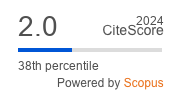Qualitative Evaluation of the Bracket-Adhesive-Enamel Junction of Metal Orthodontic Brackets: A Preliminary Report
DOI:
https://doi.org/10.5644/ama2006-124.266Keywords:
Orthodontic Brackets, Surface Topography, Surface Characteristics, Orthodontic AdhesiveAbstract
Objectives. The purpose of this in vitro investigation was to evaluate qualitatively the surface topography at the bracket-adhesive-enamel junction, bonded to the buccal and lingual surfaces of premolars with composite resin and resin-modified glass-ionomer orthodontic adhesives, using two methods of adhesive removal: a dental explorer and a micro brush.
Methods. Forty premolar surfaces were allocated to four groups of 10/ each, 20/buccal and 20/lingual surfaces. The brackets were bonded to the surface of the enamel and any extra adhesive was removed with a dental explorer or a micro brush. Specimens were evaluated and scored by two calibrated independent raters, at the bracket-adhesive-enamel junction, for adhesive overlap on the bracket, the smoothness of the surface, as well as the presence of projections and depressions, using a digital microscope. The Fisher-exact statistical test was conducted to compare the different groups.
Results. Regardless of the method used to remove the adhesives, all groups showed partial or complete overlap of the adhesive on the bracket. No statistical difference was found between the groups for adhesive overlap (P=1.0). However, resin-modified glass-ionomer was found to be statistically significantly (P<0.05) better than composite resin in both smoothness and the lack of projections or depressions, regardless of the instrument of removal.
Conclusion. Removing excess adhesive with a dental explorer or a micro brush is not an ideal method for adhesive removal, as partial or complete overlap of the adhesive on the bracket existed in all groups. On the other hand, resin-modified glass-ionomer was a superior material to composite resin for better smoothness and surface topography at the bracket-adhesive-enamel junction.





